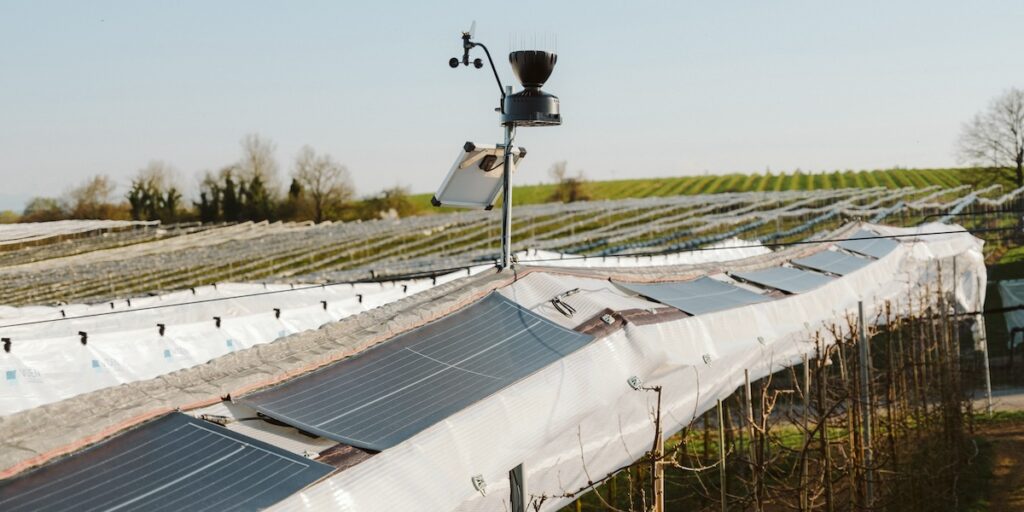Fraunhofer ISE and German weather protection specialist Vöhringer test an Agrivoltaic system that uses existing crop cover structures to support solar modules, eliminating the need for a special mounting system.
Fraunhofer Institute for Solar Energy Systems Isee and weather protection specialist Vöhringer test an unconventional Agrivoltaic system on a cherry orchard in Upper Swabia, Germany. The system is intended to reduce the costs of Agrivoltaïschen.
Typical Agrivoltaic setups for fruit growing require steel substances that must be built on open, unused land or installed between existing trees or bushes – often with considerable efforts.
Fraunhofer Ise and Voen Vöhringer use the existing substances and foils instead instead. Because these can only support light loads, the project team developed a lightweight module concept with a weight of less than 5 kg per square meter, with a potential output of 420 kW per hectare.
Felix Basler, project manager at Fraunhofer Isee, said that two factors usually increase the Agrivoltaic system costs compared to PV mounted on the ground: the construction of mounting structures and the installation of the modules. “In addition to developing cheap lightweight modules, we have designed and tested various solutions for their uncomplicated installation on traditional weather protection systems in the cultivation of special crops,” Basler added.
Leo Vöhringer, project manager at Ven, said that the setup is “incredibly simple” as a new construction or retrofit solution. “It was important to tailor an Agrivoltaic concept to fruit -growing practices, and not the other way around,” he explained, adding that the weather protection can be stored under the modules when it is not necessary.
The test facility is in Berg near Ravensburg, on the site of Obstbau Vöhringer, a sister company of Voen Vöhringer. It includes two rows of cherry trees, each about 40 meters long. The team monitors the electricity output and the harvest yield of the system, using adapted software to simulate the optimum module size to prevent the loss of shadowing. They expect to complete the evaluation at the end of the year.
The research project is funded by the German state of Baden-Württemberg. In the south of Baden-Württemberg alone, fruit trees cover under just or more than 5,000 hectares.
This content is protected by copyright and may not be reused. If you want to work with us and reuse part of our content, please contact: editors@pv-magazine.com.

